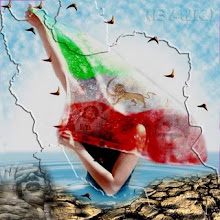Sunday, July 11, 2010
THE BASIC PROCESS OF THE FORMATION OF THE
THE BASIC PROCESS OF THE FORMATION OF THE
UNIVERSE
AND
THE RESULTING COMPOSITION OF THE WORLDS
By Dr. Maurice Bucaille
The Qur'an presents in two verses a brief synthesis of the
phenomena that constituted the basic
process of the formation of the
Universe.
---sura 21, verse 30:
"Do not the Unbelievers see that the
heavens and the earth were joined together, then We clove them
asunder and
We got every living thing out of the water. Will they not then believe?"
---sura 41, verse 11: God orders the Prophet to speak after inviting him to
reflect on the subject of the
earth's creation:
"Moreover (God) turned
to the Heaven when it was smoke and said to it and to the earth..."
There
then follow the orders to submit.
The important things to remember at
present are the following:
a) The statement of the existence of a gaseous
mass with fine particles, for this is how the word 'smoke'
(dukan in Arabic)
is to be interpreted. Smoke is generally made up of a gaseous substratum, plus,
in more
or less stable suspension, fine particles that may belong to solid
and even liquid states of matter at high
or low temperature;
b) The
reference to a separation process (fatq) of an primary single mass whose
elements were initially
fused together (ratq). It must be noted that in
Arabic 'fatq' is the action of breaking, diffusing, separating,
and that
'ratq' is the action of fusing or binding together elements to make a homogenous
whole.
This concept of the separation of a whole into several parts is noted
in other passages of the Book
with reference to multiple worlds. The first
verse of the first sura in the Qur'an proclaims, after the
opening
invocation, the following: "In the name of God, the Beneficent, the Merciful",
"Praise be to God,
Lord of the Worlds."
The terms 'worlds' reappears
dozens of times in the Qur'an. The Heavens are referred to as
multiple as
well, not only on account of their plural form, but also because of their
symbolic
numerical quantity: 7.
This number is used 24 times throughout
the Qur'an for various numerical quantities. It often
carries the meaning of
'many' although we do not know exactly why this meaning of the figure was used.
The Greeks and Romans also seem to have used the number 7 to mean an
undefined idea of plurality. In
the Qur'an, the number 7 refers to the
Heavens themselves (samawat). It alone is understood to mean
'Heavens'. The
7 roads of the Heavens are mentioned once:
--sura 2, verse 29:
"(God) is
the One Who created for you all that is on the earth. Moreover He turned to the
heaven and
fashioned seven heavens with harmony. He is Full of Knowledge of
all things."
--sura 23, verse 17:
"And We have created above you seven
paths: We have never been unmindful of the Creation."
--sura 67, verse 3:
"(God) is the One -who created seven heavens one above another. Thou canst
see no fault in the creation
of the Beneficent. Turn the vision again! Canst
thou see any rift?"
--sura 71, verse 15-16:
"Did you see how God created
seven heavens one above another and made the moon a light therein and
made
the sun a lamp?"
--sura 78, verse 12:
"We have built above you seven
strong (heavens) and placed a blazing lamp."
Here the blazing lamp is the
Sun.
The commentators on the Qur'an are in agreement on all these verses:
the number 7 means no
more than plurality.
There are therefore many
Heavens and Earths, and it comes as no small surprise to the reader of
the
Qur'an to find that earths such as our own may be found in the Universe, a fact
that has not
yet been verified by man in our time.
Verse 12 of sura 65
does however predict the following:
"God is the One Who created seven
heavens and of the earth (ard) a similar number. The
Command descends among
them so that you know that God has power over all things and comprehends
all
things in His knowledge."
Since 7 indicates an indefinite plurality (as we
have seen), it is possible to conclude that the
Qur'anic text clearly
indicates the existence of more than one single Earth, our own Earth (ard) ;
there are
others like it in the Universe.
Another observation which may
surprise the Twentieth century reader of the Qur'an is the fact
that verses
refer to three groups of things created, i.e.
--things in the Heavens
--things on the Earth
--things between the Heavens and the Earth
Here are several of these verses:
--sura 20, verse 6;
"To Him (God)
belongs what is in the heavens, on earth, between them and beneath the soil."
--sura 25, verse 59:
"...the One Who created the heavens, the earth and
what is between them in six periods."
--sura 32, verse 4:
"God is the
One Who created the heavens, the earth and what is between them in six periods."
--sura 50, verse 38:
"We created the heavens, the earth and what is
between them in six periods, and no weariness touched
Us."
The reference
in the Qur'an to 'what is between the Heavens and the Earth' is again to be
found in
the following verses: sura 21, verse 16; sura 44, verses 7 and 38;
sura 78, verse 37; sura 15,
verse 85; sura 46, verse 3; sura 43, verse 85.
1) Existence of six periods for the Creation in general.
2) Interlocking
of stages in the Creation of the Heavens and the Earth.
3) Creation of the
Universe out of an initially unique mass forming a block that subsequently split
up.
4) Plurality of the Heavens and of the Earths
5) Existence of an
intermediary creation 'between the Heavens and the Earth'.


0 comments:
Post a Comment